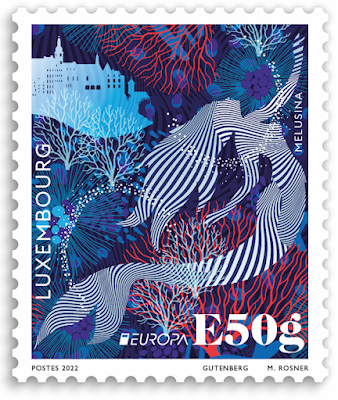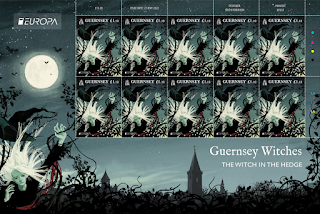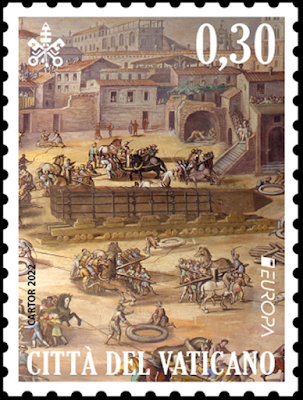 Luxembourg
Luxembourg
Date of Issue: 17th May 2022
two stamps (L50g & E50g value = 0.80 & 1.05 €)
both stamps are issued in mini-sheets of 10 stamps
Kropemann - Originally, the Kropemann was a nature spirit who lived in rivers, streams, ponds, lakes, springs, weirs or wells. According to legend, he caught those children with his Kropestaang (hooked pole) who dared to get too close to the water, pulled them in and devoured them or held them captive. Until 1950, the Kropemann was known (and feared) throughout the country. As creepy as his story sounds, many parents in Luxembourg used the warning of the Kropemann to keep their children away from dangerous waters and shores and to protect them. 30 years ago, the legend was rediscovered in Redingen, and since then the Kropemann has become firmly associated with the municipality, its mascot, so to speak and is present all year round in the form of various sculptures. Every year a big festival is held in his honour where he makes his appearance in front of numerous visitors visitors - nowadays as a children's friend - and also promotes the cleanliness of water and nature.
Melusina - According to legend, Melusina was the wife of Count Siegfried I, who is considered the founder of Luxembourg. In 963, the count built his castle on the Bock rock above the Alzette for his beautiful wife, because she had set him two conditions before agreeing to marry her: she did not want to leave the Alzette valley and she wanted to be alone undisturbed every Saturday noon. After a few years, instigated by friends, Siegfried's curiosity is said to have tempted him to watch his wife through the keyhole one Saturday and discover that her legs had turned into a fish's tail. His cry betrayed him and Melusina disappeared into the Alzette. To this day, it is said that she appears every 7 years, makes a stitch on a shirt and that as soon as this shirt is finished, the Alzette will burst its banks, the rocks will collapse and the city of Luxembourg will perish.
The Melusina with her fish tail is one of the most famous landmarks of Luxembourg City, a sculpture is located directly on the bank of the Alzette and she is a popular motif in a wide variety of illustrations.
NOTE - In 1997, Luxembourg used the legend of Melusina already for one of their Europa stamps issued on the theme "Tales and legends"!
NOTE
- The legend of Melusina is also used by France this year on their Europa issue!
































